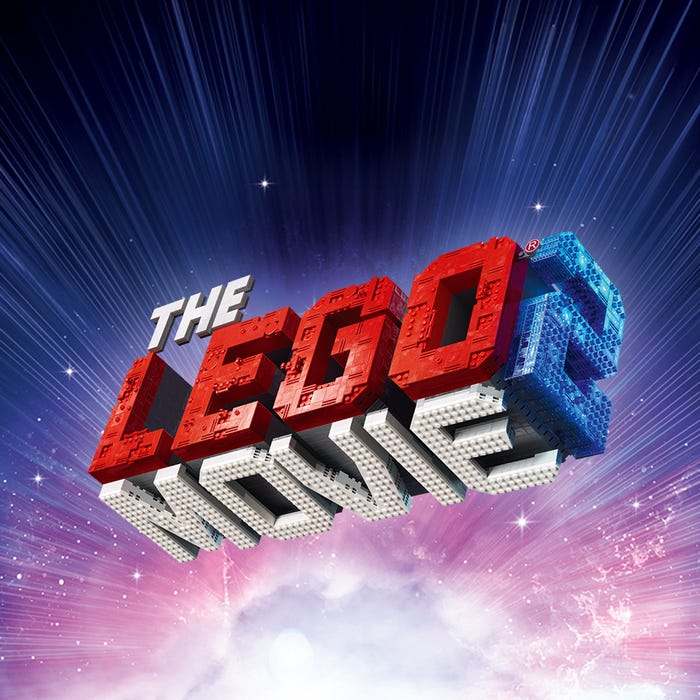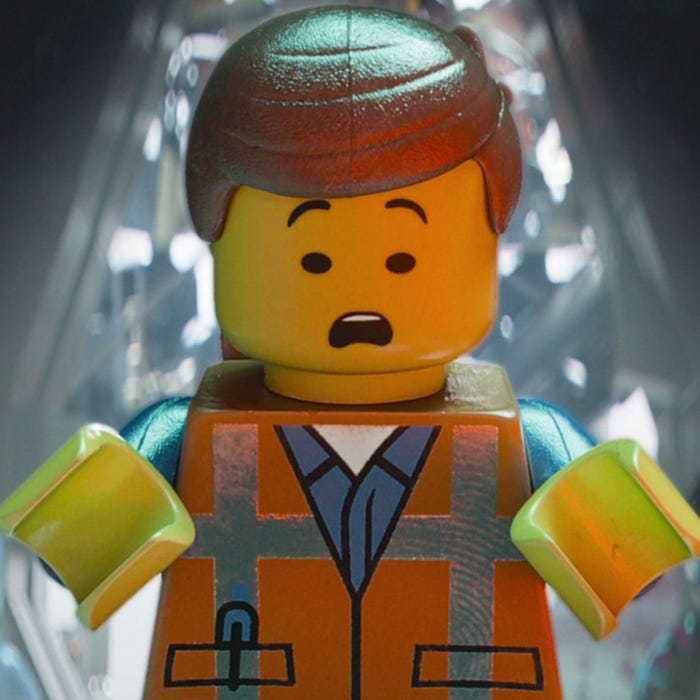When Lego Movie Come to Picture Show
Was THE LEGO® MOVIE™ stop-motion?
Was THE LEGO® MOVIE™ stop-motion?
It was the question on everybody's lips after watching the movie. Including yours, given that you're reading this article. And it's an understandable one to have, given that the film's directors' stated aim was to "make sure the audience were confused about what they were seeing, about whether it was actually stop-motion or a computer-generated film", production designer Grant Freckelton told Vox in 2017.
But like so many of Life's Great Questions, the answer isn't as simple as a yes or a no.
That's because the film is a hybrid. It utilizes computer-generated animation of real LEGO® elements, achieved in a photoreal stop-motion style. (Don't worry, we needed to read that sentence twice, too.)
In this article, we've broken down what that exactly means, and even sprinkled in a few Easter eggs along the way!
Above all else, the directors of both films wanted to make the film look homemade – exactly as if it was all created by a child (albeit a child with a Hollywood-sized budget).
As co-director Chris Miller explains in a 2015 Warner Bros. documentary 'Creating the Bricks', "the idea was to take a very homemade, [stop-motion] LEGO brick film and try and make that as cinematic as possible, with lighting and camera angles and the type of things that you would do on a big-budget live-action movie."
How did they achieve this?
Firstly, it's worth saying that everything you see in the films is 100% LEGO bricks. The various cities, planets, galaxies, vehicles… all of it was designed from scratch, in a way that followed the 'rules' of real-life LEGO pieces, before being digitized. In other words, not a fake LEGO exterior in sight.
As the CG supervisor of the film Aidan Sarsfield put it, "the brick technology that is behind this film is quite remarkable. When you see a vista of thousands and thousands of buildings, those buildings are real LEGO buildings that haven't been cheated, they are made out of bricks." – Creating the Bricks, 2015, Warner Bros.
In the documentary, Chris Miller explained that the reasoning behind this was "so that if you froze any single frame of the movie, it would be something you could actually build yourself." Even if it was something complex like an explosion, or an ocean wave, or mud splashed up onto a camera 'lens' by a rogue LEGO Batmobile™.
To accurately build up the sets brick by brick, the designers of the film used a digital modeling program. But instead of being some ludicrously expensive software you've never heard of, the main program used was actually our own, humble, digital building tool, LEGO Digital Designer, which is available for free for anyone to use!
But while such programs would faithfully replicate the physics of LEGO building (for example by not allowing pieces that don't correspond to one another to fit together), the problem with relying on them entirely would be that the eventual output might be something that isn't a practical LEGO build.
For example, in THE LEGO MOVIE 2™, the moviemakers wanted the character of Ultrakatty to have as many spikes as possible. But it was only through experimenting and interacting with real-life prototypes that the film designers realized that although having loads of spikes might look cool, it would be impossible to properly hold for someone trying to play with it.

Now, you might be wondering why that would be such a problem… as long as it looks cool?
It all goes back to the aim of the directors to make every part of the films look like it was made by a child. If a child couldn't hold the models, that would chip away at the… (it seems weird to say this, but the) 'realism' for which they were so striving. And so, the directors got to play with countless real-life prototypes of the characters before signing off on them. Sorry, did we say play with? We meant 'evaluate'.
Easter egg time! You can see loads of the original character, set and vehicle prototypes littered throughout the live-action scenes in both the movies!
Onto the animation. While the film is computer-generated, the animators of the film (the Australian studio Animal Logic) were asked to make the film follow the laws of stop-motion as best they could. This means that the figurines were quite limited by their physical dimensions: elbows couldn't bend, legs couldn't stretch, and so on. There are some examples of these rules being loosened, for example when a character needs to 'nod'. But, by and large, the rule of pausing the films at any moment and being able to recreate what was on the screen extends to the characters.
Of course, following the rules of stop-motion animation alone isn't enough to make the movies feel homemade. For that, they also needed to have imperfections. The kind of imperfections that were inserted with an extraordinary level of precision into the films. In 'Creating the Bricks', co-director Phil Lord talks about "putting all this research and development into how to get fingerprint smudges onto the LEGO bricks", and you can see the results of their considerable efforts on a lot of the characters, including most often on Emmet's shiny plastic.

Spot those fingerprint smudges?
As well as this, characters were designed with imperfections in mind. In particular, Benny the 1980s spaceman was modeled after Chris Miller's actual toy spaceman he'd had since he was a kid, which was well-known to have a design flaw in the helmet causing it to crack. (Side note – are we allowed to say that? Have we passed the statute of limitations where we are allowed to talk about the defects of 40-year old LEGO models? If you are reading this sentence, then the answer is "yes… I think".) That's a quote from the movie, for those who didn't catch on.
There's one final question to be asked here – what with all the work that went into making every last thing buildable, the microscopes and dioramas, the endless research into imperfections, and all the painstaking work and production that went into making the film look like a homemade stop-motion film… Why not just make it stop-motion?
To answer that, we'll just direct you to the part of the first film that was made in the classic stop-motion style – the end credits. Made by Stoopid Stoodios (best known for their work on 'Robot Chicken'), the 3-minute sequence took 3 full-time animators two months to create. The incredible final twelve seconds of the credits, which features all the previous sets animated simultaneously, had EACH of the 3 animators moving 150 LEGO pieces per FRAME. (!!!)
The time and effort that would be required for that technique stretched across a full-length film is almost incalculable. But luckily, only almost… because it was figured out when the first movie was being developed. To create THE LEGO MOVIE™ in stop-motion would have taken 10 years and 15 million LEGO pieces.
Maybe they'll try it for the next LEGO movie… although for our sakes we it comes sooner!
When Lego Movie Come to Picture Show
Source: https://www.lego.com/en-us/categories/adults-welcome/article/was-the-lego-movie-stop-motion